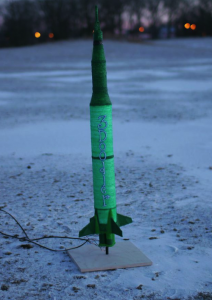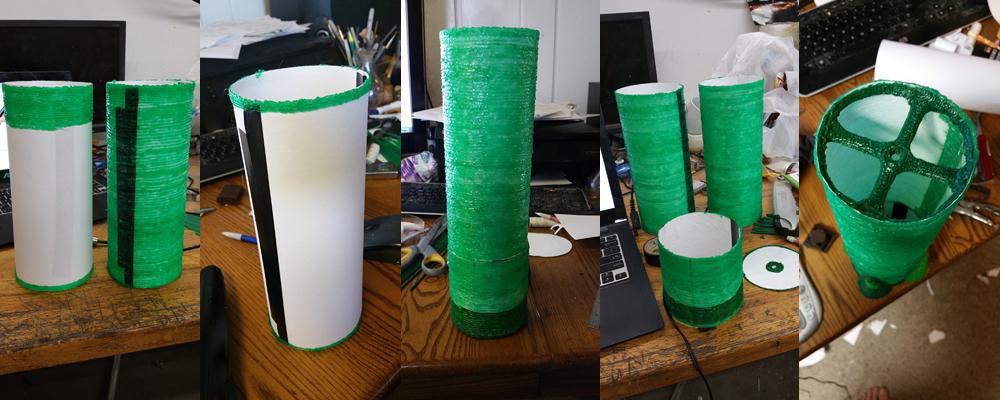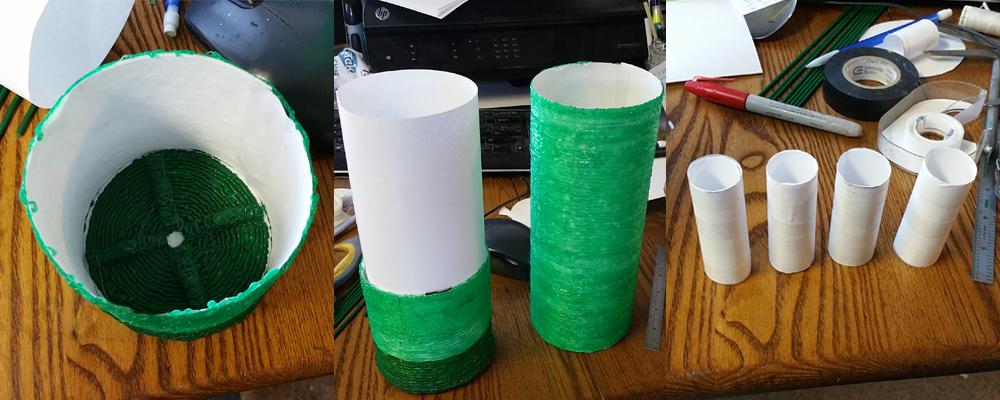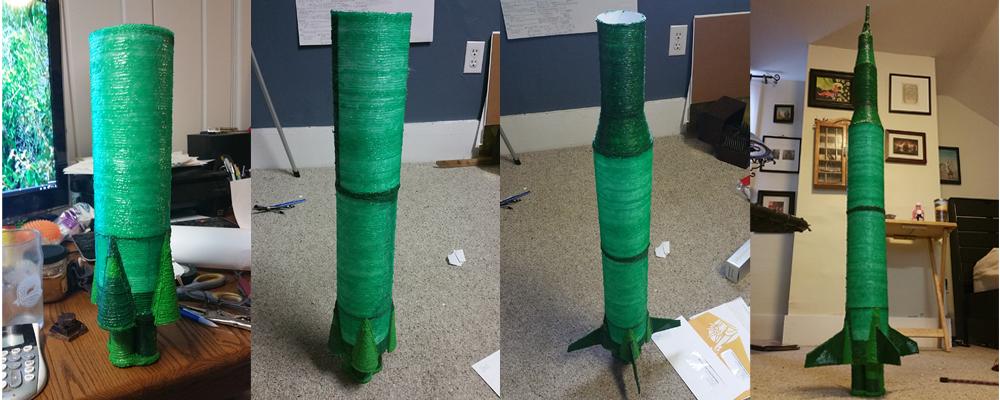It was with great fanfare that Pete Dilworth, co-founder and inventor of 3Doodler, the first 3D printing pen, launched his second generation 3Doodler. The launch took a particularly literal direction — skyward — with a fully functioning model rocket created with 3Doodler 2.0.
The 3Doodler, which lets you 3D print using either PLA or ABS filament that you load in the end of the device, looks something like a cross between a fountain pen (a large one) and a soldering iron. You have the option of running it at different speeds depending on what you’re printing and there’s a foot control now so that the you can concentrate on the careful guidance of the device without needing to hold down the control for the filament — so no cramping hands with the most delicate work! I love this device, which really should be, among other seemingly infinite applications, a jumping off point for people who want a glimpse of how 3D printing works.
Dilworth modeled his 3Doodled rocket on the Apollo rocket but his small home version was surprisingly really easy to construct.
He began by making tubes of sheets of plain white printer paper, which he wound green filament around and around with the 3Doodler to create the various sized, hollow tubes for the rocket. To make the cone shapes, Dilworth found a simple cone template online and then 3Doodled away until he’d produced the remaining parts of his rocket. Finally, he installed his four C-model rocket engines.
The entire 3Doodling part of the production process took about 15 hours, with Dilworth doing the 3D printing work for 4 or 5 hours per day. The finished rocket is about 40” tall and around 3 ½” in diameter. He used eight packets of PLA filament to create his mini-Apollo and the rocket weighs slightly under 1 lb. The finishing touch was adding “3Doodler” to the length of the rocket in blue PLA.
“The launch itself was a surprising success,” reported an enthusiastic Dilworth, “with the rocket reaching an estimated height of 150 meters or 500 feet.”
The launch, while successful, was evidently a bit of a comedy routine, recalled Dilworth. Damage to the rocket itself was minimal and it should be launch-worthy again as soon as he’s able to install new engines, which will likely be none too pleasing to nearby geese, which were evidently mildly traumatized by the noisy lift-off.
One thing Dilworth didn’t have the time for when constructing his first rocket was to incorporate a parachute system, making the craft’s return to earth a little less potentially destructive. He notes that strangely the greatest challenge with regard to the rocket’s construction was ensuring that the paper tubes retained their rounded shape.
“Keeping the paper tubes as round as possible was difficult, so I simply doodled rings around them to help them keep their shape,” said Dilworth of the difficulty. “It’s funny to think that I Doodled and launched a rocket hundreds of feet above us, something seemingly very high tech, and yet the trickiest part was keeping the paper tubes in place. But that’s the beauty of learning to make things all over again with the 3Doodler, new challenges arise, and new solutions are found!”
I imagine that after inventing the pretty ingenious 3Doodler, Dilworth should be able to work out the kinks of the far less complicated rocket.
What do you think of this out-of-this-world 3Doodled project? Let us know in 3Doodler 2.0 Launches Sky-High forum thread over at 3DPB.com. Check out the video, below, of the rocket’s successful launch.
https://youtu.be/xHPltjHo9xM
Subscribe to Our Email Newsletter
Stay up-to-date on all the latest news from the 3D printing industry and receive information and offers from third party vendors.
You May Also Like
3D Printed Heat Spreader Could Improve Efficiency of Electronics
The low-hanging fruit for decarbonization has long been improving the efficiency of existing systems, hence the justification for LED lights and ENERGY STAR certified appliances. While such minor moves are...
3D Printing News Unpeeled: Marine Gearboxes, 3D Printed Motors and $1.7 Million in Seed Funding
UK based Equipmake just released their Ampere-220 e-axle system. The system, which is meant for high performance electric cars, was similar to one released on the Ariel HIPERCAR. It has...
CEAD Unveils 36-Meter-Long 3D Printer for Abu Dhabi’s Al Seer Marine
CEAD, a Dutch original equipment manufacturer dedicated to large-format 3D printers, has unveiled what it claims to be the world’s largest robotic arm-based 3D printer. At 36 meters long and...
3D Printed Biocomposites Could Help Reduce Marine Plastic Pollution
Concerns about the impact of plastic litter and microplastics in the oceans are at the forefront of environmental study. For decades, the marine environment has suffered from the degradation of...







































